Hurricane season has hit the east coast and fires have begun to cause damage on the west coast again, which means now, more than ever, is the time to put together a first aid kit for your dog. After working with dogs for some time, we’ve seen it all and put together a list of essential items to include in your dog first aid kit.
Putting your own kit together saves money and also reduces waste. Plus, this list covers every scenario and will either fix your dog up on the spot or give you time to rush your dog to the vet.
List of items to include in your dog first-aid kit
Wound Disinfectant
It’s important to always have a bottle of Chlorhexidine diacetate solution around your house for your pets to disinfect any wounds. To use this antiseptic solution, you can use a syringe from your kit to put on the area to dislodge bacteria or debris. You can also soak some gauze sponges and gently blot the affected area.

Caution: Make sure you always dilute the solution for safe use. It is recommended to dilute Chlorhexidine diacetate to a 0.05% solution. Although you can easily buy a bottle online, we recommend consulting your vet before purchasing because there are a lot of different variations of the product and it’s important to buy the correct one for your pet’s wounds.
If you’re not sure how to do dilutions, here’s an easy-to-use dilution calculator to make sure you’re doing it correctly.
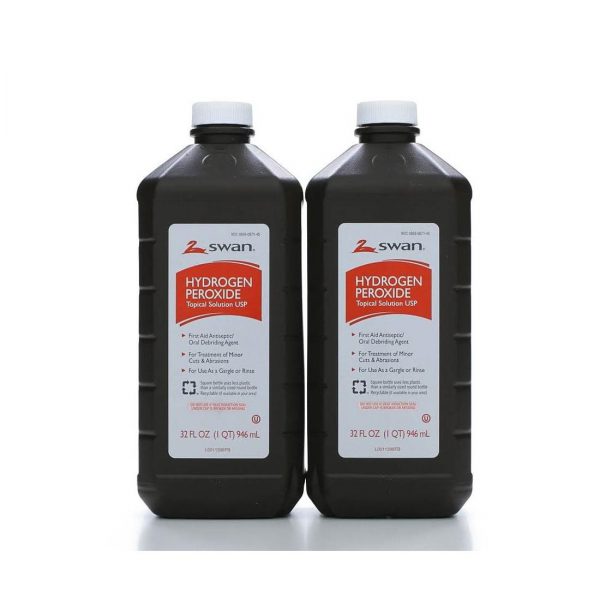 Hydrogen peroxide
Hydrogen peroxide
Every dog first aid kit needs hydrogen peroxide to flush out bacteria. However it should not be used to treat wounds on an ongoing basis as it will re-open the wound or slow the healing. Do not use it on deep wounds. Not only will it hurt your dog, it may push bacteria deeper into the wound. If you notice that a wound has a pocket or is deep, bring your dog to the veterinarian.
Hydrogen peroxide can also be used to induce vomiting if your dog eats something toxic.
Caution: Never induce vomiting without first speaking with a veterinarian or animal poison control.
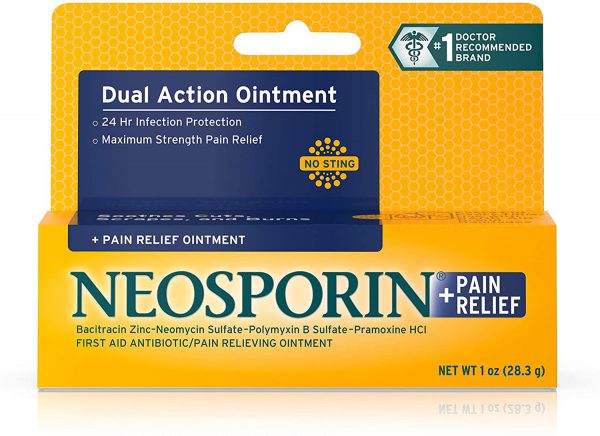 Antibiotic ointment
Antibiotic ointment
You can apply Neosporin or other pet-safe ointment such as Terramycin to wounds as an antibiotic after the wound has been thoroughly cleaned. If your pup gets a small cut or scratch, antibiotic ointments will help prevent infection, relieve pain, and act as a barrier from bacteria and germs. If you notice a wound is red or has discharge, you should bring your dog to the veterinarian.
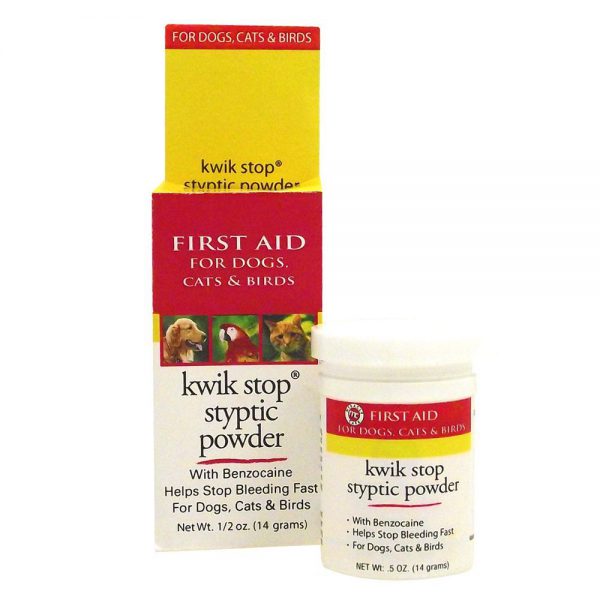 Styptic powder
Styptic powder
Styptic powder stops bleeding quickly and is best used for broken nails. So if you are feeling brave and venture to cut your dog’s nails at home, you will want this close by. However, it should not be used for wound care. If a wound will not stop bleeding, you should wrap it and bring your dog to the veterinarian.
Saline solution
If your dog gets dirt, debris or any other foreign object lodged in the eye, you can rinse it with saline. If you don’t have dog-specific saline solution at home, saline for humans is also pet-safe. The saline bottle should squirt so that you can get the liquid into the corners of your pet’s eyes if you need to. This will not only make your dog feel better but also prevent conjunctivitis.
Additionally, you can use the solution for cleaning wounds if you don’t have a bottle of wound flush handy. However, to note, saline solution is not anti microbial. If you’re dog has an infection, consult your veterinarian.
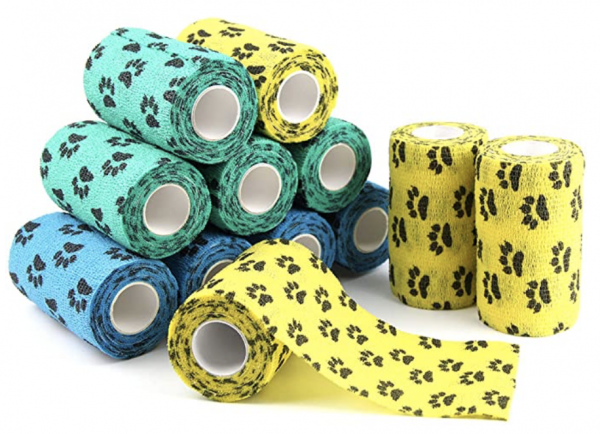 Gauze and pet self-adhesive tape
Gauze and pet self-adhesive tape
In an emergency situation, gauze can control bleeding, act as a temporary brace for suspected fractures and much more. Self-adhesive tape can be used to hold gauze or other first-aid items in place and prevents unraveling. However, make sure you don’t wrap gauze or tape too tight or else it will cut off your dog’s flow of blood and cause paw swelling. This pet self adhesive tape won’t stick to your dog’s fur and is easy to apply and remove.
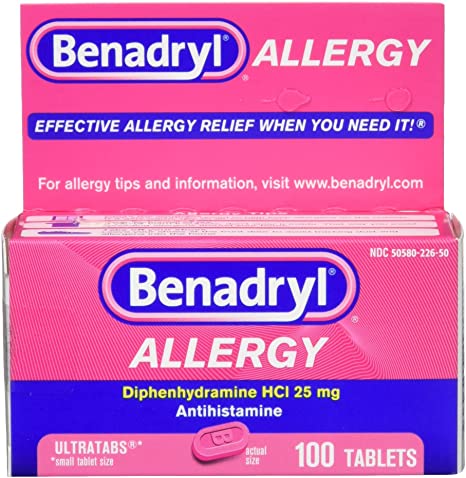 Benadryl
Benadryl
Dogs have allergic reactions to plants, pollens, chemicals and foods, just like people. Benadryl will reduce the symptoms of minor allergies or prevent a major allergic reaction from escalating, like a bee sting. This gives you enough time to rush your dog to the veterinarian.
Caution: Make sure the Benadryl is only anti histamine and has diphenhydramine as the only active ingredient. Do not buy if there are ingredients like ibuprofen or acetaminophen, which are dangerous for your dog.
Cotton balls and Cotton-tipped swabs
These are good to have in order treat minor wounds, scratches, etc. or to clean your dog’s ears or wipe down eyes. Make sure they are sanitary and kept in a clean location. Also, make sure you gently use the cotton-tipped swabs when applying to ears, eyes or other sensitive areas. If done incorrectly, it can cause serious damage to your dog’s eardrums or eyes.
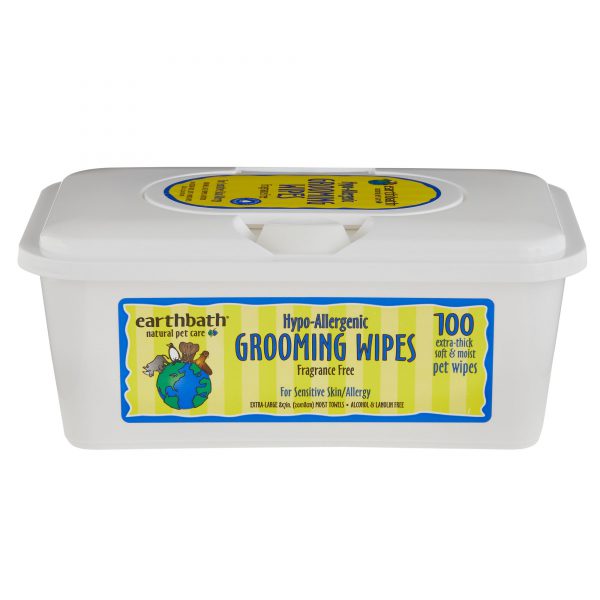 Grooming wipes
Grooming wipes
These may not be considered an “emergency” item, but grooming wipes are great for messy accidents and dirty dogs. You never know when your dog is going to roll around in mud or step in something gross. You can also use them to clean dirt or blood off of a wound to get a better look, or to clean your dog’s eyes and ears. Dirt, fecal matter, plant debreeze and other outdoor sources can carry a lot of bacteria and parasites, so keeping your dog clean can prevent infections that could make your dog sick.
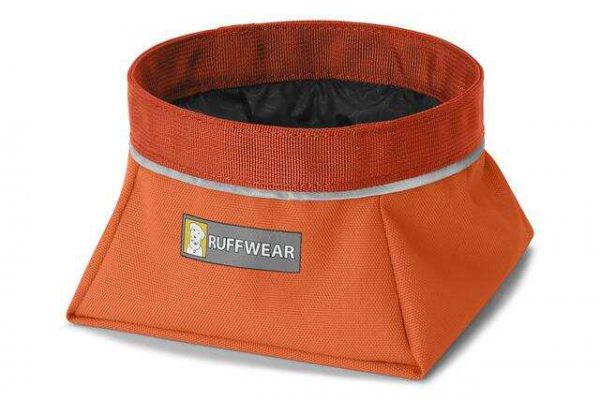 Travel bowls
Travel bowls
Whether you’re in an emergency situation or just on a hike or long road trip with your dog, you should always carry a travel bowl and water with you when you’re away from home. Hydration is very important and vets recommend your dog should have at least 1 cup of water a day for every 10 pounds they weigh. So, if your dog weighs 40 pounds they should be drinking about 4 cups of water every day. If you’re not sure what type of bowl to buy, check out our recommendation for the best travel bowls for your dog.
Not only does your dog need to stay hydrated, but they need their nutrition as well. Make sure you include their favorite treats and a few bags of food in the kit. Weruva has a variety of healthy wet food packets that are the perfect size for traveling.
Vaccination and medical records
If you’re dealing with an emergency, it’s important to always have your dog’s records on hand. In the case you have to visit an emergency vet, the hospital will be able to take better care of your dog if they have access to your dog’s medical history. We recommend keeping all the paperwork in one place or putting it on a USB drive. Also, keep your vet’s phone number and other emergency contacts written down just in case you don’t have access to your phone or computer.
Wash your hands
As a reminder, especially during these times, you should always thoroughly wash your hands before treating any wounds — on yourself, other people, or dogs!
For a full list of pet aid supplies, check out the Humane Society website.
In case of an emergency, it’s important to call your veterinarian or emergency veterinarian.
Updated August 5, 2020.
This article was written by Andrea Servadio, of Fitdog Sports Club and first published by The Huffington Post on September 3, 2013. This article was also featured in San Diego Pets Magazineon November 11, 2013. San Diego Pets Magazine offers captivating stories and resources that promote the amazing San Diego Pet lifestyle. Twitter: @SanDiegoPets